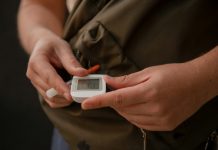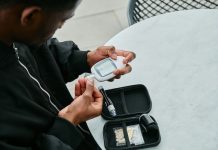
Type 2 diabetes has long been viewed as a lifelong condition, a chronic disease that patients must manage indefinitely.
However, recent research offers hope that reversing this condition might not be as far-fetched as once thought. This article explores the causes of type 2 diabetes and how modern science points to potential paths for reversal.
Type 2 diabetes occurs when the body either resists the effects of insulin — a hormone that regulates the movement of sugar into your cells — or doesn’t produce enough insulin to maintain a normal glucose level.
Unlike type 1 diabetes, which is caused by the immune system attacking pancreatic beta cells, type 2 is largely the result of lifestyle factors and genetics.
The primary culprits behind the development of type 2 diabetes include being overweight, leading a sedentary lifestyle, and having poor dietary habits.
Excess weight, particularly when fat is concentrated around the abdomen, increases the body’s resistance to insulin. Additionally, inactivity and a diet high in refined sugars and saturated fats exacerbate this condition.
Genetics also play a significant role; having a family history of diabetes can increase one’s risk. Yet, it’s the lifestyle factors that are within our control and thus present an opportunity for intervention and change.
The concept of reversing type 2 diabetes primarily hinges on significant lifestyle changes that address these root causes.
Research has shown that for some people, making comprehensive lifestyle adjustments can effectively send diabetes into remission, which means blood sugar levels return to a non-diabetic range without the need for medication.
Diet plays a pivotal role in this reversal process. Studies, including those from the Diabetes Remission Clinical Trial (DiRECT), highlight the impact of a low-calorie diet on diabetes remission.
Participants who adopted a low-calorie, nutritionally balanced diet for a specific period experienced significant weight loss and, in many cases, saw their blood sugar levels return to normal ranges.
This suggests that for some individuals, the pancreatic function can recover enough to regulate blood sugar effectively, provided that the pancreas hasn’t been damaged beyond repair.
Physical activity is another critical component. Regular exercise helps lower blood sugar levels by increasing the body’s sensitivity to insulin.
Muscles use more glucose when we’re active, which helps to clear excess sugar from the bloodstream. A combination of aerobic exercises, like walking or swimming, and resistance training, such as weight lifting, can be particularly effective.
Moreover, ongoing support from healthcare professionals and behavioral change interventions have also been shown to be key in helping individuals maintain these lifestyle changes long-term.
The journey to reverse diabetes is not solely a physical one but also requires a mental shift in how individuals approach their health and lifestyle choices.
In conclusion, while type 2 diabetes has traditionally been seen as a permanent condition, emerging research offers a glimmer of hope for reversal.
Through significant lifestyle changes, particularly in diet and exercise, and with the support of healthcare teams, reversing type 2 diabetes is becoming a realistic goal for some.
It’s a powerful reminder that our health is in our hands to a large extent and that even conditions as daunting as diabetes can be tackled with the right approach.
If you care about diabetes, please read studies about Vitamin D and type 2 diabetes, and what you need to know about avocado and type 2 diabetes.
For more information about diabetes, please see recent studies about how to eat to prevent type 2 diabetes, and 5 vitamins that may prevent complication in diabetes.
Copyright © 2024 Knowridge Science Report. All rights reserved.



